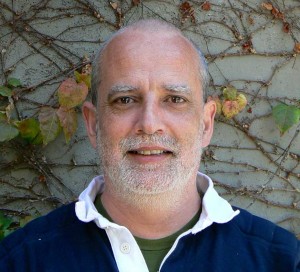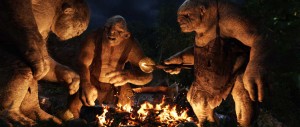
One of the hardest things for the sound team on a big picture like The Hobbit: An Unexpected Journey, the prequel to the Lord of the Rings film trilogy, is to make it sound familiar and yet new and fresh at the same time. Supervising sound editor Brent Burge had his hands full doing exactly that. “Effects wise, it’s difficult because we are trying to create a world that is familiar based on what was in Lord of the Rings, but also a world that is frightening and realistic, and kind of veering into the fantasy land,” he explained. “So sure, we could have gone and recorded all the ambiences of the locations where we recorded the dialog, but we wanted to bring a special treatment to the environment to make them just a little bit unfamiliar to the audience.”
Every scene carried a different challenge. “For example, the scale of the stone giants as opposed to the scale of the hobbit and the dwarves,” Burge said. “We knew we had to achieve a sense of scale in the sound of the voices, not in volume or reverb, but in the actual sounds themselves because you can only do so much processing on a particular sound to achieve the sound you want.” One may think that, to make something sound larger, it must simply be made louder, but it is not as simple as that. “Dave Farmer was the sound designer who actually dealt with that sequence, and he did a lot of work with sourcing that material. In my experience, if the sound at the core is not a sound that can produce a sense of scale, no matter what you do to it, it will always sound incorrect.”
 Many of the other scenes had creatures that had to sound unique. Often, for characters like the trolls, goblins or the orcs, they added actual animal vocalizations, especially baying or howling to get the sound they needed, which of course, is a common sound device. He credited Dave Whitehead for that work. The hard part was blending the animal vocalizations with the actors’ voices to make the combined tracks sound like one voice or character.
Many of the other scenes had creatures that had to sound unique. Often, for characters like the trolls, goblins or the orcs, they added actual animal vocalizations, especially baying or howling to get the sound they needed, which of course, is a common sound device. He credited Dave Whitehead for that work. The hard part was blending the animal vocalizations with the actors’ voices to make the combined tracks sound like one voice or character.
Another trick Burge and his team employed was the use of advanced software reverb programs that could map an interior space, which they used to copy the insides of several different caves. The sound team could then use the map to duplicate that reverb in post for not only the dialog, but also for the water drips and foley. That tied all the sounds together, making everything sound real and as if they were in the same environment. In addition, they recorded the ambience or “air” of some of those caves, which could be used in the quieter sequences. Burge loved the way the music from composer Howard Shore helped fill those quiet moments, like the one with Gollum, without overpowering the sound.
This wide dynamic range of the audio in The Hobbit – from the very loud to the very quiet – took expert finesse and provided the perfect vehicle to showcase the creative talents of Burge and his sound team.





